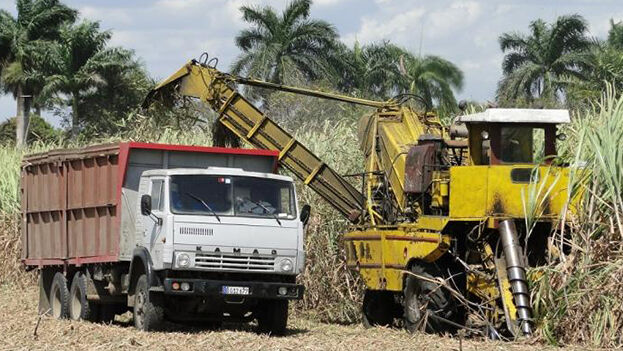
![]() 14ymedio, Havana, January 6, 2022 — As expected, sugar production in Cuba does not seem to surpass the worst prospects. In the first two months of the 2022-2023 cycle, only 69% of what was expected has been obtained, the state group Azcuba confirmed to the State newspaper Granma. The problems remain the same as in previous years: the lack of funding to acquire inputs and the energy crisis, says the Communist Party newspaper, in an article that moves away from the usual triumphalism, as reflected in the title: “It’s getting better, but not all the expected sugar is produced.”
14ymedio, Havana, January 6, 2022 — As expected, sugar production in Cuba does not seem to surpass the worst prospects. In the first two months of the 2022-2023 cycle, only 69% of what was expected has been obtained, the state group Azcuba confirmed to the State newspaper Granma. The problems remain the same as in previous years: the lack of funding to acquire inputs and the energy crisis, says the Communist Party newspaper, in an article that moves away from the usual triumphalism, as reflected in the title: “It’s getting better, but not all the expected sugar is produced.”
The sugar harvest began at the end of November with the goal of producing 455,198 tons after the lean results of the previous year, when production closed at its lowest level of the last century, and only 68% of the 1.2 million tons planned was met.
Dionnis Pérez, director of Informatics, Communications and Analysis of the state monopoly, told the official newspaper that the small harvest — November and December — was 2.3 times higher than that of the previous campaign. This slight rebound is explained by the recovery of about 7,000 tons of sugar “in terms of industrial efficiency,” which improved yield by 1.14%, he explained.
However, the spokesman for the state group pointed out that only seven sugar mills complied with the small harvest plan, including the 14 de Julio (Cienfuegos), Melanio Hernández (Sancti Spíritus), Ciudad Caracas (Cienfuegos), Fernando de Dios (Holguín) and Héctor Rodríguez (Villa Clara).
With a 15-day delay, the Boris Luis Santa Coloma sugar mill, in Mayabeque, has the most delays in the production plan. Followed by the Mario Muñoz (Matanzas) and Enidio Díaz (Granma) mills, with four days, as well as Ciro Redondo (Ciego de Ávila) and Carlos Manuel de Céspedes (Camagüey), with two.
Pérez acknowledged that sugar production faces the same difficulties as a year ago, associated, on the one hand, with the lack of resources to buy the inputs and machinery necessary in the activities of the mills and the cultivation of cane, and, on the other, with the constant blackouts that the Island suffers at the time of repairs.
The sugar sector, which at other times was considered the engine of the Cuban economy, also operates with obsolete machinery and suffers from constant breakdowns. According to the official, the deficiencies that most affected the grinding occurred in the turbogenerators of the Urbano Noris (Holguín), Mario Muñoz (Matanzas) and 30 de Noviembre (Artemisa) power plants. In addition, there were problems in the air compressors in the mill of Dos Ríos (Santiago de Cuba) and in the centrifuges of Carlos Manuel de Céspedes (Camagüey).
To ensure production, the official added, the group will resort to cutting at the Primero de Enero headquarters (Ciego de Ávila), in addition to guaranteeing the early start of Ecuador (Ciego de Ávila), Antonio Sánchez (Cienfuegos) and Majibacoa (Las Tunas).
Twenty-three mills are participating in this harvest in order to “ensure sugar from domestic consumption and other prioritized destinations,” adds Granma’s note.
After having been one of the world’s leading exporters for decades, the Cuban sugar industry has collapsed and no longer covers domestic consumption, which ranges between 600,000 and 700,000 tons per year with the distribution of four pounds per person per month through the ration book. In recent years, Cuba had to import beet sugar from France to meet its internal needs and to be able to dedicate part of its production to export contracts signed in advance with China.
Translated by Regina Anavy
____________
COLLABORATE WITH OUR WORK: The 14ymedio team is committed to practicing serious journalism that reflects Cuba’s reality in all its depth. Thank you for joining us on this long journey. We invite you to continue supporting us by becoming a member of 14ymedio now. Together we can continue transforming journalism in Cuba.
